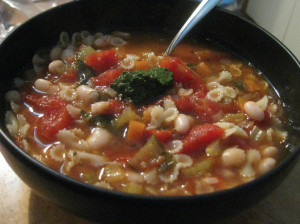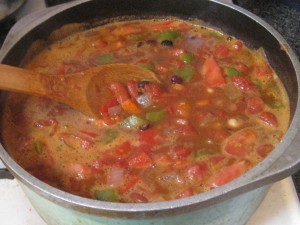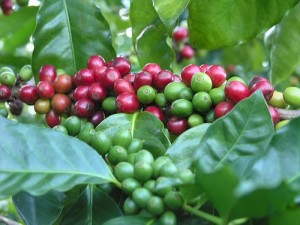I’ve been into beans this winter. I like pouring something that could substitute for buckshot into a cauldron of water and ending up with soft, succulent morsels of food. And I cannot overemphasize the appeal of the cauldron component; to make yummy beans from scratch, I have to take the biggest pot we have, a cast-iron thing of uncertain origin in the home, and fill it with all sorts of whatever’s-on-hand to make delicious what would otherwise be bland bean flesh. I mean, eye of newt is surely not tasty to most palettes and Macbeth’s witches weren’t making dinner, so this is perhaps not the best comparison, but I like pouring and scraping and shaking whatever cool things I can find into a simmering pot and getting a little magic out of it when all is said and done.
So the other day I decided to riff on the rough idea of a Southwestern-themed bean soup I had burbling around in my brain. We had a butternut squash on hand, not Shannon’s favorite vegetable, and I’m always trying to come up with ways to make yummy things folks don’t typically like. Note that you don’t have to include all of these ingredients in your version. You shouldn’t make a special trip to the store just for a lime or whatever, and the soup will be tasty even if you don’t get the mustard going.
Southwestern Black Bean & Mustard Squash Soup Continue reading




